Bonhoeffer on Solitude and Silence

But the reverse is also true: Let him who is not in community beware of being alone. Into the community you were called, the call was not meant for you alone; in the community of the called you bear the cross, you struggle, you pray. You are not alone, even in death, and on the Last Day you will be only one member of the great congregation of Jesus Christ. If you scorn the fellowship of the brethren, you reject the call of Jesus Christ, and thus your solitude can only be hurtful to you. "If I die, then I am not alone in death; if I suffer they [the fellowship] suffer with me" (Luther).
Dietrich Bonhoeffer, from "The Day Alone," ch. 3 in Life Together: A Discussion of Christian Fellowship.
The Word Made Flesh

When I was a small child, I supposed that if Christmas were to ever fall on a Sunday, perhaps Jesus would return. Of course, I didn't realize at that young of an age that this had happened many times over the last two thousand years, but I recognized the special significance of a day like today when two holy days fall together.
Kathy and I worshipped this morning at the church in which we were married in 1990, Cypress Baptist Church in Benton, Louisiana. Of course, it was not in the same sanctuary. They outgrew that long ago. And I was pleased that in the much larger auditorium, almost every pew was filled, with the exception of the first few rows of the center section (it is a Baptist Church after all). We sat there with Kathy's mother and our old college friend, Tim Wise. We were led in music by my mentor from college days, Philip Wade. It was a very pleasant experience all around, and quite worshipful. I was thankful to be in the presence of other believers, worshipping the Lord on this high holy day, the combination of Christmas and the Lord's Day which only comes once every eleven years.
I hope you had an opportunity for corporate worship as well. Merry Christmas to all of you--friends we know and friends we do not know yet--from Rick & Kathy Mansfield.
An All-Inclusive/Non-Offensive/Legal-Bases-Covered Seasons Greetings
Please accept with no obligation, implied or implicit my best wishes for an environmentally conscious, socially responsible, low stress, non-addictive, gender neutral celebration of the winter solstice holiday, practiced within the most enjoyable traditions of the religious persuasion of your choice, or secular practices of your choice, with respect for the religious/secular persuasions and/or traditions of others, or their choice not to practice religious or secular traditions at all...and a fiscally successful, personally fulfilling, and medically uncomplicated recognition of the onset of the generally accepted calendar year 2006, but not without due respect for the calendars of choice of other cultures whose contributions to society have helped make America great, (not to imply that America is necessarily greater than any other country or is the only "AMERICA" in the western hemisphere), and without regard to the race, creed, color, age, physical ability, religious faith, mental capacity, choice of computer platform, or sexual preference of the wishee.
THE FINE PRINT: (By accepting this greeting, you are accepting these terms. This greeting is subject to clarification or withdrawal. It is freely transferable with no alteration to the original greeting. It implies no promise by the wisher to actually implement any of the wishes for her/himself or others, and is void where prohibited by law, and is revocable at the sole discretion of the wisher. This wish is warranted to perform as expected within the usual application of good tidings for a period of one year, or until the issuance of a subsequent holiday greeting, whichever comes first, and warranty is limited to replacement of this wish or issuance of a new wish at the sole discretion of the wisher.)
The Swing

Your arms first held me;
I knew right then and there
Our love was meant to be.
On a new porch swing
Built by your own hands,
We gazed at our new house
And knew we had great plans.
On that same porch swing
Just the other day,
I looked back on our life
And love that’s here to stay.
You can email Kathy at akmansfield@mac.com.
Life's Scars

If ever someone has been broken and fixed
I think it would be I.
And lo, and behold, I figured out
The answer to my “Why?”
Sometimes God must let us fall
And feel Life’s harshest wrath,
Only then can we arise
To walk straighter on His path.
To others I might seem to be
Someone whose life is marred,
But God sees me as clean and new,
Not as someone scarred.
You can email Kathy at akmansfield@mac.com.
Regrouping After Dover
U.S. District Judge John E. Jones denounced the Dover Area School Board in a ruling Tuesday, saying its first-in-the-nation decision to introduce intelligent design into the science curriculum violates the constitutional separation of church and state.
The ruling was a major setback to the intelligent design movement, which is also waging battles in Georgia and Kansas. Intelligent design, or ID, holds that living organisms are so complex that a higher force must have created them.
Source: "District Will Abandon Intelligent Design" (CNN.COM)

Until last May, I taught for five years at Whitefield Academy, a (private) Christian college prep school. The textbooks used in the high school science classes were not "Christian" textbooks, but rather standard secular high school texts--even in the biology classes. The books presented evolution--not creationism, not intelligent design. It was left to the teacher of the class to include these kinds of discussions and instruction. The feeling was that if a student graduated from our school without receiving a thorough knowledge of both evolutionary theory and the arguments against it, that student would be unprepared for life beyond the twelfth grade.
Look, I honestly believe that all truth is God's truth. It doesn't matter whether it's scientific truth, mathematical truth, or historical truth. Truth is truth and what's found to be true about origins and existence does not conflict with what's true about God. If Darwinian evolution were true, then it would be a process initiated and directed by God. However, like many others, I have come to have serious questions about the validity of evolutionary theory.
The problem is that the Darwinati (you saw the term coined here first) can't stand to have their explanation of things questioned. Nothing to them is open to discussion, let alone debate. Is this attitude responsible scientific inquiry? Is the current Darwinati dogma any more generous than the geocentric position of the Catholic church a few centuries back (which actually had more to do with Aristotelian physics than Christian--let alone biblical--theology)? The answer is no. And the Darwinati are so insecure that if anyone even hints at questioning their tenets, that person is labeled as ignorant or fundamentalist and essentially ignored.
If there is evidence of God's fingerprints in the cosmos, is that not just as much science as anything else? Yes, but the Darwinati won't even leave room for this idea. Heaven forbid if one day the phrase "God was here" was found in a DNA strand. There would probably be an immediate lawsuit filed by the ACLU to have it removed from the cells of every public figure on the basis of separation of church and state. If God himself stood on the Washington Mall and declared he created the world, would there be some who would want this event left out of high school history textbooks? Granted, I'm being facetious, but frankly, I don't think I'm too far off the mark from the way some extremists might react.
Contrary to popular misunderstanding, there wasn't an intelligent design curriculum being introduced in Dover. Rather it was a simple statement to be read to the students that there were some who had significant questions regarding standard evolutionary theory. How exactly did this violate the supposed notion of separation of church and state? No church, no denomination, no particular religion was being advocated in the statement.
So ignorance does continue. And admittedly it can be found on both sides of the argument because we aren't allowed to have public discussion of the issue. I admit that I'm no biologist, but neither are many of the people who are so opposed to the idea of intelligent design. I can't imagine that someone who would honestly and openly read something like Science and Evidence for Design in the Universe by Michael Behe or Icons of Evolution by Jonathan Wells wouldn't at least have some questions regarding accepted Darwinian theory.
At this point, opponents of evolution are going to have to regroup. The term "intelligent design" was coined as a means to question evolutionary principles without promoting the Christian worldview as done in the earlier creationism movement and creation science. In fact, I've heard some traditional creationists lambast the Intelligent Design viewpoint because in their view, it is not Christian enough. But Intelligent Design was never meant to promote Christianity. Rather, it's goal was to question Darwinian evolution. However, I don't know if this distinction is clear enough in the minds of the public at large.
Granted, I speak as a theist, specifically a Christian. I make no apologies for that. Personally, I lean toward the idea of an old earth/universe, but I reject macro-evolution and accept special creation. And as already stated, I believe that all truth is God's truth, and that includes scientific truth. In reaction to the Dover decision, I would therefore offer the following three suggestions:
1. The Intelligent Design movement may have to rethink its strategy. If current arguments lead to opposition based on the flawed notion of violations of separation of church and state, perhaps rather than focusing on the design aspects of creation, flaws in evolutionary theory should start to receive the main focus of attack. Granted, that is even another step back, but it may take arguments on that rudimentary of a level in order to create doubt in the minds of those who hold to evolutionary theory. Reveal evolution for the bad science that it is, and then work from there.
2. Questioning of evolution needs to be done from within the halls of the academy. Yes, I know much of this is already being done. However, there are also quite a few "skeptics of evolution" who have not raised their voice for fear of ridicule from their peers or marginalization. Further, our brightest Christian graduates need to be encouraged to pursue the sciences at all academic levels.
3. More Christians need to commit to teaching in the public schools. I've said this before in other contexts, but the public schools need to be viewed as a mission field. With the lack of free inquiry and discussion, public schools may not offer the best education any longer, but they do offer opportunities to reach young minds with truth, including the truth of the gospel.
The Dover decision is currently being viewed as a victory for the Darwinati. However, I wold pray that it might be a wake-up call and perhaps even a rallying cry: "REMEMBER DOVER!"
Even the Rocks and Trees Cry Out
Be sure to read Jason's blog entry, "Never Waste a Tree."
By the way, in case you're keeping count, this marks my 200th blog entry since I began two years ago. My original goal was to write at least one blog a week. I believe I've surpassed that!
Bookends Review in December SBL Forum

Bookends is a bibliographic reference management program that I use myself and recommend on my Links of Interest page. My primary reason a few months back for choosing Bookends over similar programs for the Mac such as Sente or Endnote was the SBL Journal glossary that Zacharias compiled for Bookends. This glossary is now included with every copy of Bookends.
Links:
Danny Zacharias' review of Bookends.
Danny Zacharias' website: Deinde.org.
Bookends Reference Management and Bibliography Software from Sonny Software
Spiritual Reflections on a Red Rider Carbine Action 200 Range Air Rifle with a Compass in the Stock

Now as a red-blooded boy, I too wanted a BB gun for Christmas, but my mom kept telling me that I would shoot my eye out and that was 5 years before this movie was released. I know several kids my age that had moms saying the same thing. Did I ever meet someone that shot his eye out? Well no, but it seemed like a good excuse for me not getting a BB Gun until I turned 12.
As a pastor in my 30’s, I began to look at the spiritual themes of movies at Christmas time. Having seen a good number of m these movies, they always seem to center around family and bashing the commercialization of Christmas. A bit of irony, don’t you think? So I wanted to focus on classics like Christmas Vacation, It’s a Wonderful Life, The Grinch Who Stole Christmas, the Polar Express, Elf, and A Christmas Story. As a resource for spiritual themes I often frequent David Bruce’s site, Hollywood Jesus, but surprisingly, I found nothing there on A Christmas Story.
I saw a bit of spirituality in the movie with the idea that we may ask God for something, and His response would be “No, you’ll shoot your eye out.” As I was reading the Scriptures I came across the story of Israel wanting a king in 1 Samuel 8. The people came to Samuel wanting a king because all the other nations had one. God replied to Samuel telling him to let the people know what will happen if they get their request. They people rejected this answer and so God told Samuel to get them a king.
Now I saw a couple of issues here and in the movie. This is a classic battle of the wills that we all have with God at some point in our lives. You know like these requests we make to God:
Me: God get me a better paying job so I can support my family.
God: No, I think that would be a bad idea. You may end up working too much and sacrificing your family.
Me: That would never happen, I have priorities.
God: This isn’t what I want, but I’ll allow it.
Me: Thanks God. (Then we forget all about him and go into deep debt, get a divorce, screw up the kids, and then come crawling back)
So isn’t this what Israel did? They got their king, they didn’t need God to fight for them anymore, and in the end shot their eyes out.
So then my question is, what right do we have in groveling back to God after the BB hits us in the eye?
Well that’s the amazing thing about grace. He picks us up and cleans out wounds.
God isn’t Santa where we are to sit on his lap and give our demands (a.k.a. “requests&rdquo
Thanks, God!!
Ken Steele is pastor of Prairie Springs Church in Sun Prairie, Wisconsin.
You can email Ken at ken@prairiesprings.com.
Christmas IQ Quiz
A "Christmas IQ" quiz was given to us at church this morning. I am embarrassed to say that I did not make a perfect score. To add insult to injury, the source for the quiz was a Youth Specialties book. Maybe I should ask for a refund for my education.
I used starQuiz to make an online version of the test so that you can take it as well. If everything works correctly (and let me know if it doesn't), it should give you your results after you complete the test along with explanations of any incorrect answers.
Be warned, there might be trick questions.
Click the graphic link below to take the test:

...and if you're brave enough, post your scores in the comments.
Christmas Traditions

2. Gift Giving, as a part of the Christmas tradition, stems from an ancient Roman custom called Strenae, where the Roman citizens would give "good luck" gifts of fruit, pastries, or gold to their friends on New Years Day. In England the tradition later survived as what was called "Boxing Day." On Dec. 26 the priests used to open the alms-boxes and distribute the contents among the poor in the parish. Later, it became customary to give Christmas "boxes" to the servants and public workers.
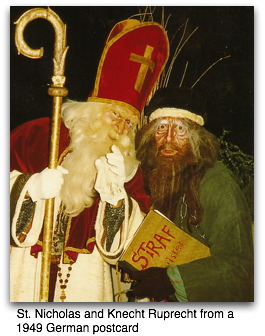
4. Stockings were actually shoes filled with straw and carrots and left by children for the horse of Saint Nicholas and placed in front of the fireplace. This practice, beginning around 1100 A.D., assumed that the straw and carrots would be replaced by gifts and within a few decades evolved into the hanging of stockings from the mantle of the fireplace.
5. The Mistletoe was, like many of the evergreens, brought inside during the winter months to serve as a reminder that Spring would come, and was said to have such a spiritual influence that if two enemies met under a branch of the mistletoe they would drop their weapons and embrace. This old belief may have been the origin of the modern custom of kissing under the mistletoe.
6. The Christmas Wreath symbolized the strength of life overcoming the forces of winter. Christians extended this to represent the eternal, unending life promised through Jesus.
7. Holly, with its prickly leaves and wild berries, was adopted by Christians to stand for the crown of thorns and drops of blood worn by Jesus at His crucifixion.
8. Poinsettias, a newer tradition developed by a U.S. minister to Mexico in the 1800's, were symbolized by their green and red Christmas colors. The green represented the continuance of life and the red stood for the blood of Christ.
9. Caroling is said to have begun around 1818 by Josef Mohr, the parish priest of Oberndorf. It is said that on Christmas Eve Father Mohr wrote the three stanzas of "Silent Night" as a surprise for his parishioners because he felt they would be disappointed when they learned that the parish organ had broken down. Earlier in the day he had blessed a newborn baby and it is likely that the first stanza was inspired by this event. In order to have some music for his poem he rushed over to his friend Franz Gruber, a teacher and church organist. Within a few hours the melody was completed and at midnight mass that evening the two men sang the masterpiece for the first time.
Source: Unsecured. This information was distributed via a handout in my Sunday School class this morning. If you know a definite source for any of this information, let me know and I will post it here.
The Theory of Ecclesiastical Spatial Relativity
Blockbuster Stores Reinstate Late Fees

Of course, all this was contingent upon the fact that Blockbuster had correct credit card information on its customers. No, I haven't absconded with any unreturned Blockbuster movies to add to my collection. In fact, I can't even remember the last time I rented a movie (which I personally find to be sad). However, even if I had a video from Blockbuster, I would dare say that they do not have any current credit card information on me. My old credit cards were cut up, paid off, and cancelled when I shaved my head and drank Dave Ramsey's Kool-Aid. And even if they had my debit card information, I couldn't imagine it would be current. So, in my case, all they would be able to do is send nasty fee reminders and phone calls. In the end, according to the article I've linked below, this policy proved to be too expensive for many of the local Blockbusters, especially the independent stores.
I suppose it would be swell to think that out of generosity to its customers, Blockbuster introduced this really nice policy that eliminates one of the nasty aspects of renting videos, the late fee. However, Blockbuster had its own fine print to the deal. And then, again, so did it's customers. The customers' fine print can be read at Psalm 53 and Romans 3:23.
By the way, that reminds me...I owe $5.75 to the Louisville Free Public Library...
Read the full AP story, "Late Fees Return at Some Blockbusters."
State of Being: Whither Western Philosophy?
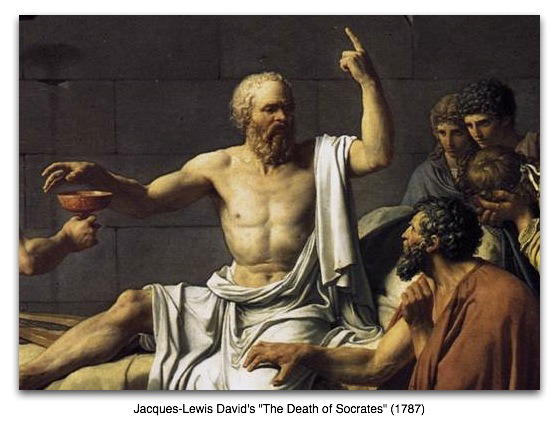
I had a few minutes to kill this afternoon (but upon reflection decided to let them live), so I stopped in to browse the shelves at the Louisville Books-A-Million. I'm still in the process of planning for my upcoming philosophy class, so I decided to look for the philosophy section. The average non-walled bookcase at Books-A-Million has five shelves. I found the philosophy section square in the middle of the religion/inspiration/Bible section of the store, and it took up a total of two of these bookcases, or ten shelves. "Great," I thought, "ten shelves of philosophy books to peruse" (okay, I doubt I actually thought the word, peruse). But then I looked closer.
The ten shelves were divided into three categories: Eastern Philosophy, Western Philosophy, and General Philosophy. Suddenly I realized how the shelves were balanced. Two shelves were devoted to the general category--not sure exactly what kind of nonsense was categorized there. But get this, there were TWO shelves of Western Philosophy and SIX SHELVES OF EASTERN PHILOSOPHY! Think about this for a minute, in an American bookstore, there was more space--three times more space--devoted to Eastern Philosophy than Western Philosophy.
Now granted, Books-A-Million is not the store that's going to set the standard for philosophy inventories. But this kind of odd balance of philosophical thought in a store in Louisville, Kentucky, which has one foot in the South and one foot in the Midwest, speaks loudly to the state of philosophy in our culture. In a society where morals have become more and more relativistic and there is less tolerance for absolutes, does Eastern thought now have more appeal, more persuasion, more influence?
Well, maybe. But then I looked a bit closer. The two shelves devoted to Western Philosophy had the normal stuff you'd expect: Penguin Classic editions of the standards, ranging from Plato to Nietzsche. Various surveys of Western Philosophy and more current interpretations were represented as well. Over to the Eastern Philosophy shelves--what was represented there? The writings of K'ung fu-tze (Confucius); this or that Dummies book on Buddhism, Taoism, and Hinduism; Sun Tzu's Art of War (actually, I found Art of War in the Western Philosophy section, too; all of it was a mess, but I got over my urge to straighten up store bookshelves years ago).
I figured it out. If there's overlap between philosophy and religion in the West, it's even more so in the East. And in many cases, the two are synonymous. What Books-A-Million called Eastern Philosophy was everything from Eastern thought to Eastern religion, all compacted into six shelves. Glancing around, there were cases and cases of books related to Christianity and Judaism, although most of it is popular stuff that I probably wouldn't ever read. And I couldn't imagine trying to pick out a Bible by myself at a store like this if I didn't know anything about the Bible (I counted six walled bookcases of Bibles).
In light of all this, I suppose the balance wasn't as off as I initially thought. However, perhaps the labels could be fine tuned a bit more. And the Western Philosophy section needed to be straightened up and restocked.
Fortunately, I guess Western Philosophy isn't gone from the culture yet. But don't go by the standards set at your local book mega-store.
LWW Opening Weekend Exceeds Disney's Expectations; Prince Caspian Greenlit Behind the Mouse's Closed Doors
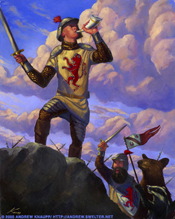
Considering that Disney and Walden Media invested a combined $180 million into LWW, and the movie already brought in 60% of that in its opening weekend, it could recoup it's further investment in video sales next year alone. But with another six weeks of or so of box office sales, odds are they will see far more profit than that.
Prince Caspian is the only other story to involve all four of the Pevensie siblings as children and takes place a year after the events in LWW. The timing is perfect for a sequel while the actors are still at the right age. This has been Walden Media's plans all along with a script for Prince Caspian completed months ago.
See also the related story, "Rumor Has It Prince Caspian Is a Go" at IGN.
Top-Selling Bible Translations for December 2005
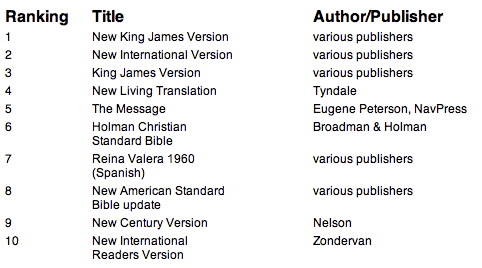
Source: Christian Booksellers Association
Three thoughts... (1) It blows my mind that the NKJV could be the number one translation in 2005. Are we sure that Thomas Nelson is accurately reporting their sales? (2) I'm surprised that the English Standard Version isn't on the list. Everywhere I look folks seem to be carrying an ESV Bible, but then I spend a lot of my time on the SBTS campus, too. (3) I think it will be interesting to see when the TNIV cracks the top ten and where it will be ranked in five years.
Book Sale

Wade's Rants
Check it out and bookmark it.
Joseph's Response (A Sonnet on Matthew 1:18-25)
Some other seed than mine engendered this:
Some stolen love, some alien, wretched bliss
Raped all integrity, all trust suppressed.
To consummate my pledge, by honor pressed,
Would violate that honor, transform kiss
To custom, love to duty, prove remiss
In truth, and make of joy a jest.
Exhausted by despair's fatigue, I slept
The torment of the God forsaken dead.
I tossed and turned, or when I woke, I wept,
Until an angel stilled my fears, and said:
"Abandon doubt, and take this quiet boast:
The child she bears is by the Holy Ghost."
--D. A. Carson, Holy Sonnets of the Twentieth Century
Eight Maniacal Thoughts toward Bob the Builder
Things That I Desperately Wish Would Happen While Having to Watch Bob the Builder with my son:

7. That Dizzy the Cement Mixer would start taking A.D.D. medication.
6. That the ATF would bust Farmer Pickles for moonshining, since there is no way he can make money giving away eggs.
5. That Mr. Bentley the building inspector would inform Bob that, due to federal regulations, Bob can’t build it.
4. That the town that Bob and company live in would run out of money and therefore be unable to give Bob so many contracts.
3. That Wendy would whistleblow on Bob about his use of shoddy materials and cheap labor.
2. That Rolly the Steamroller would flatten Spud into a bunch of mashed potatoes.
1. That the DVD would spontaneously combust.
Andrew Wells can be contacted at awusceng@yahoo.com.
The Chonicles of Narnia: The Lion, The Witch and the Wardrobe

It's been at least a decade since I read C. S. Lewis' The Lion, the Witch and the Wardrobe (henceforth, LWW). And I hate to confess, that it's the only one in the series I've read. Perhaps it's that lesser time for reading fiction that I mentioned in a blog entry the other day. That also means that having read the book so long ago, I won't be able to tell you in detail how faithful the new movie released today was to the book, or how it strictly compares. However, that's okay because what I can tell you is that the movie thoroughly feels as if it is faithful to the spirit of the C. S. Lewis that I know from his numerous other books I've read. Perhaps this is because Douglas Gresham, the stepson of C. S. Lewis, was given final say on decisions ranging from the script to character and set designs.
The movie is absolutely captivating from beginning to end. Sadly, it's very hard for me to escape into a movie anymore, but I found that a number of times, I felt completely caught up in the events taking place. The movie centers around the adventures of four children, and there were certain points in which I felt like a fifth participant in the film. It takes a lot to pull me into an experience like that. Perhaps that is the beauty of Lewis' storytelling. Yes, this is a children's story, but it speaks to adults as well without resorting to dialogue and innuendo that only adults will pick up on as is done in so many other supposed children's movies today.

I was fascinated with the characters--human and non-human--in LWW. The four principal actors playing the Pevensie children were essentially unknown actors, but they performed their parts believably and remarkably well. Some of the other cast members have more experience, but most will be fairly unfamiliar to audiences outside of England. American movie-goers will recognize Tilda Swinton who plays the alluring White Witch as the actress who so masterfully portrayed the androgynous archangel Gabriel in Constantine. Liam Neeson provides the voice for the lion, Aslan.
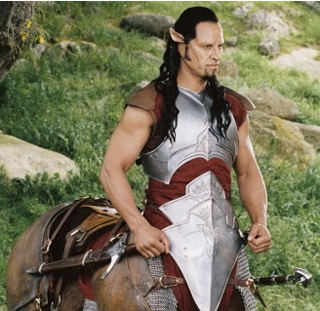
For those who may have been concerned that the spiritual themes in the Lewis' original story would be toned down in a big-budget Hollywood retelling, you can put your fears to rest. From what I could tell, and from what I remember of the book, nothing was left out. There were a number of biblical parallels that may even be more explicit due to the visual nature of telling the story through film. However, parents with young children should be advised that some scenes may be too scary for very small children. But the movie is not quite as violent as Lord of the Rings, and not near as dark as the Harry Potter stories.
Lewis did not want to see his Narnia stories depicted in film because he was concerned for the way the non-human characters would be depicted. However, technology has come so far, that I would have to hope that he would be pleased with the final product. Centaurs and minotaurs move the way I imagine they would if they really existed. I really don't think that LWW could have been made before this point in cinematographic history with such excellence. Walden Media, the company behind LWW (Disney is merely the distributor and marketer) has purchased the option to make all seven stories in the Chronicles of Narnia. Such decisions are usually based on the financial success of the first installment in a series. However, based on what I saw today, and upon my desire already to see this movie a second time, I believe we can look forward to seeing the rest of the series over the coming years. That's a nice thought for those of us who were fed by the annual installment of Middle-Earth for three years in a row, but have been left not quite so satisfied with tales from Hogwarts. In the meantime, I suppose I have six other books from Lewis to catch up on!
Bessie Mae Walks on Water! A Christmas Miracle?

More pictures of this supernatural event can be found in our Photos section under "Bessie on Ice."
Let's Apply "Happy Holidays" to Other "Special" Days of the Year
Following the politically correct logic of certain stores and businesses removing the word "Christmas" from their greetings in recent years and using the generic "Happy Holidays" or worse, "Happy Winter," perhaps we should extend such "courtesy" for other holidays throughout the year. In particular, I'm thinking of Halloween.
Yes, if I'm going to be home on October 31, I suppose I buy some candy in advance, to appease the racketeering little rugrats that come to my door, lest they shower me with rotten eggs and mark up my windows with soap. However, I realized that I hadn't really celebrated Halloween myself in a number of years, so why should I let people greet me with "Happy Halloween" in their stores? Isn't it insensitive of them toward me, as part of the probably 2% or so of the population who doesn't celebrate this holiday?
And what about the Catholics who are celebrating All Saints Day on November 1 and All Souls Day on November 2? And as a protestant, what if I want to celebrate Reformation Day (I did post a blog about it this year) on October 31? And what about the religious groups who offer "Fall Festivals" as alternatives to Halloween? Isn't it insensitive to all of us celebrating other holidays to only highlight All Hallows Eve? And isn't Thanksgiving just right around the corner, three weeks later?

Related Reading:
- Has It Come to This? Christmas in the U. S.
- Invasion of the Secular Snowmen
Mellel Roadmap

Just to clarify things a bit: Yes, we do intend to make Mellel a viable alternative to FrameMaker; No, we have absolutely no intention to make it a DTP machine.
I think that with Mellel 2.0 we've reached our initial target -- making Mellel a good, solid word processor.
From here on, we plan to move along the three fronts we've defined:
A. "For scholars" -- adding tools that will make Mellel an even better tool for scholars, especially better bibliography integration, index, cross-references, more notes options, etc.
B. "For long document" -- ...in addition to the options mentioned above, a better solution for "book" management, image<>text relations and perhaps a bolder move into the track-changes and re-purposing of text.
C. "For writers" -- this is the area where I think we have the most to contribute in terms of bringing something completely new into the fray. All the tools available now simply don't do the job -- either dedicated "project" tools and/or book writing and "brain storming" or "outlining" tools are all thinking about it the wrong way, I feel. We'll have something interesting to say here too in 2006.
Posted to RedleX (Yahoo Groups) 12/5/2005
Here are some of my past blog entries referring to Mellel:
- It's Official: No Right-to-Left Text in Mac Word 12 (and Why I've Dumped Word for Mellel) [11/18/2005]
- Mellel 2.0 Released [11/14/2005]
- The Myth of Limited Software Choice for the Mac [9/17/2005]
Mellel website: http://www.redlers.com
The Restoration of Anne Rice
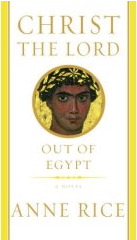
And I'll also admit that, in light of this blog entry's subject, that I've only read one Anne Rice novel, Interview with the Vampire. I read it when I was in seventh grade, and it was probably a bit too mature for me at the time, but that was true of a lot of books I had my hands on back then [sigh]. I later saw the movie adaptation with Tom Cruise that was released a little over a decade ago, but I don't remember a whole lot about the movie. However, there are particular scenes from Rice's book--which I read 25 years ago--that stand out quite vividly. I suppose that is testimony to her God-given ability to tell a story, and to tell it well.
Anne Rice's return to the Christian faith of her childhood is not a brand new subject, but it is still recent enough that it makes me raise my eyebrows in amazement. Cindy Crosby has written a fascinating article at christianitytoday.com chronicling Rice's life and recommitment to her Catholic roots, including her new book, Christ the Lord: Out of Egypt. Be sure to read Crosby's article, "Interview with a Penitent," in its entirety, but below are a few highlights that jumped out at me.
On Rice's Return to the church:
In 1998, she came to a crossroads. "I realized I didn't have to find the answer to every question or know who was right on every issue. All I had to do is to love and do my best. The rest he would help me work out."
The tipping point for Rice was a longing to take Communion. Catholics believe Christ is present in the sacraments—that they are his body and his blood. Rice called Troxler, asking, "Will they take me back?"
Troxler assured her the answer was yes. Rice went to see a priest, to whom she made her confession for two hours. She discussed her writing in depth, her personal failings, and her hopes for a better life. Although her husband Stan's atheism had not changed, he readily agreed to be remarried in the Catholic church.
The role books and Christian scholarship played:
She read obsessively: John A. T. Robinson, Augustine, D. A. Carson, Jacob Neusner, Luke Timothy Johnson, Craig L. Blomberg. Slowly, the historicity of the Resurrection became hard to deny. "Christianity achieved what it did," she says, "because Jesus rose from the dead."
Rice had long conversations with Troxler, who had once studied to be a nun. They read passages from the Bible to each other, as did Anne and her sister Karen. Rice's questions intensified. "The Lord came looking for me," she remembers. "Everywhere I turned, I found images of the Lord and his love."
Rice spent a lot of time sitting cross-legged in her room, her back to the bookcase, surrounded with books. Eventually, she says, "I read myself right back into faith."
That's an extremely wide range of viewpoints, no matter how you look at it: Protestant, Catholic, and Jewish; conservative and liberal; evangelical and mainline; historical and contemporary. Rice is to be commended for her breadth of study.
Rice's surprise (in researching her new book) at the level of skepticism among some New Testament scholars:
"I wasn't prepared for the cynicism or bias against Jesus in biblical scholarship," Rice says. "I didn't know about the rancor in scholastic circles. People have built entire careers on tearing the gospel to pieces. I wasn't prepared for the degree of acid and vitriol … credentialed scholars from universities saying there was no Virgin Birth or [Christ] never walked on water.
"I've studied a lot of history. Sound historians don't make statements like this. But some New Testament scholars do."
Her statement immediately above speaks volumes. Welcome to my world.
Rice's assessment of N. T. Wright:
As she researched the New Testament, Rice was particularly impressed by N. T. Wright, the prolific bishop of Durham and the author of The Resurrection of the Son of God.
"I was blown away by the fact that he accommodated all the skeptics and did it with generosity," Rice says. "He referenced their books and arguments and answered in his own brilliant, patient way and still maintained that Jesus rose from the dead. I had dreamed of this sort of scholarship."
On whether she will ever write another another vampire novel:
About her previous subjects, Rice says, "I would never go back, not even if they say, 'You will be financially ruined; you've got to write another vampire book.' I would say no. I have no choice. I would be a fool for all eternity to turn my back on God like that."
There's much more about Rice's spiritual journey and her new book in the article by Crosby, and I commend it to you. I realize that a number of you reading this whom I know personally are not Catholic and you may just shrug your shoulders at Rice's faith. However, personally, I believe that I would have more in common with a Catholic who takes her faith seriously than a Baptist who is one in name only. And yes, some of her views described in the article are questionable, but I would like to think that Rice, like all of us, is still in process of transformation (Rom 12:2)--becoming more like Christ. The title of her new book, Christ the Lord, carries great significance as well. Based on her wide study described above, I have no doubt that such a title was intentional.
If anything, Rice's journey of faith, loss of faith, and restoration to faith fulfills the wisdom in Proverbs 22:6, "Teach your children to choose the right path, and when they are older, they will remain upon it" (NLT).
Bonhoeffer on Community

Not self-justification, which means the use of domination and force, but justification by grace, and therefore service, should govern the Christian community. Once a man has experienced the mercy of God in his life he will henceforth aspire only to serve. The proud throne of the judge no longer lures him; he wants to be down below with the lowly and the needy, because that is where God found him. "Mind not high things, but condescend to men of low estate" (Rom. 12:16).
Dietrich Bonhoeffer, Life Together
What's Next--An Annual Christianity Today Swimsuit Issue?
German youths offer R-rated Bible calendar
Topless Delilah, nude Eve illustrate Scriptures ‘in a different way’
Reuters
Updated: 1:02 p.m. ET Dec. 2, 2005
BERLIN - A German Protestant youth group has put together a 2006 calendar with 12 staged photos depicting erotic scenes from the Bible, including a bare-breasted Delilah cutting Samson’s hair and a nude Eve offering an apple.
“There’s a whole range of biblical Scriptures simply bursting with eroticism,” said Stefan Wiest, the 32-year-old photographer who took the titillating pictures.
Anne Rohmer, 21, poses on a doorstep in garters and stockings as the prostitute Rahab, who is mentioned in both New and Old Testaments. “We wanted to represent the Bible in a different way and to interest young people,” she told Reuters.
“Anyway, it doesn’t say anywhere in the Bible that you are forbidden to show yourself nude.”
Bernd Grasser, pastor of the church in Nuremberg where the calendar is being sold, was enthusiastic about the project which is explained online at [link deleted].
“It’s just wonderful when teenagers commit themselves with their hair and their skin to the Bible,” he said.
It will be officially launched over the weekend.
Copyright 2005 Reuters Limited. All rights reserved. Republication or redistribution of Reuters content is expressly prohibited without the prior written consent of Reuters.
© 2005 MSNBC.com
URL: http://www.msnbc.msn.com/id/10297248/
If this were being reported somewhere other than a newssite, I would think it was a parody of seeker-targeted evangelism. Where do you even begin with something like this? The Bible doesn't say that you're forbidden to show yourself nude? Even if you take the second half of 1 Timothy 2:9 to be culturally conditioned, the theme of the verse is modesty which would definitely exclude nudity. Further, if the calendar is being promoted as "depicting erotic scenes from the Bible" as described above, how could this ever be reconciled with the command to "Flee sexual immorality [porneia]" in 1 Cor 6:18?
By the way...yes, I removed the link in the news article to the German website. I'm not going to be responsible for providing links to pornography on my blog, and I truly believe that this calendar falls into that category. The fact that the calendar depicts biblical scenes simply adds blasphemy to the sin of porneia.
I have no doubt that they will fulfill their desire (pun intended) to "interest young people."
Which Action Hero Are You?
 | You scored as Neo, the "One". Neo is the computer hacker-turned-Messiah of the Matrix. He leads a small group of human rebels against the technology that controls them. Neo doubts his ability to lead but doesn't want to disappoint his friends. His goal is for a world where all men know the Truth and are free from the bonds of the Matrix.
Which Action Hero Would You Be? v. 2.0 created with QuizFarm.com |
Take the quiz yourself and post your results in the comments.
Has it Come to This? Christmas in the U. S.

Some of you may remember my blog entry from last year, "Invasion of the Secular Snowmen," in which I commented that snowmen had replaced Santa Claus as the official symbol of
In last year's post, I brought to your attention the seemingly concerted effort to remove any mention of Christmas from the holiday season. And, of course, this year the big story is that Wal-Mart employees are not allowed to say "Merry Christmas." However, news as recent as yesterday indicates that either this wasn't true, or more likely, Wal-Mart is now trying to backtrack on their recent policy change. "Well, here's what we really meant... ."
The move to eliminate or at least ignore Christmas in our culture is in spite of the fact that an extremely large majority of American celebrate Christmas, even those who do not identify themselves as Christians...and even those who do not hold to any theist position at all! It seems that the United States has become so politically correct that our culture will now go out of its way to offend the majority as long as it does not dare run the risk of offending the minority. The only people who really get offended at this are in extremely small numbers--I would guess them to be less than 2% of the population, if not even smaller. When will we wake up and realize that to cater to the minority is an absolute slap in the face to the democratic ideals upon which this nation was founded? The non-establishment clause in the First Amendment was never intended to suggest that we try to please everyone, because in our attempt to do so, we please no one.
At least others have started to pay attention to this. I noticed that John Gibson has written a book, The War on Christmas. I haven't had a chance to read it yet, but it may be worth checking out.
I'm still recommending the same thing as last year: politely return a "Merry Christmas" when you are greeted with "Happy Holidays." Don't be obnoxious or start an argument, but let people know which holiday you are most happy about! The birth of Christ was never meant to be hidden or kept to oneself so as not to offend another. Rather it is to be announced, proclaimed, just as it was in the beginning:
“And the angel said unto them, Fear not: for, behold, I bring you good tidings of great joy, which shall be to all people. For unto you is born this day in the city of David a Saviour, which is Christ the Lord. And this shall be a sign unto you; Ye shall find the babe wrapped in swaddling clothes, lying in a manger. And suddenly there was with the angel a multitude of the heavenly host praising God, and saying, Glory to God in the highest, and on earth peace, good will toward men.”(Luke 2:10-14, KJV)
The Blog at Two Years: A Look Back
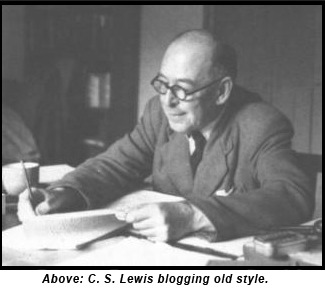
If you look back on my entry on this day last year ("The Blog at One Year"), you'll see I noted that I had written 55 blogs that first year which met my goal (at least based on averages) to write one blog per week. Well, how did I compare with number of blogs in the second year? Drum roll please... This is the 177th blog I've written which means that I wrote 122 entries in year two, more than twice the number of my first year. Lately, I've been creating one or more posts everyday, but I don't ever anticipate writing the kind of blog that has multiple entries added all day long. I don't have anything against that kind of blog; I just don't have that kind of time! But who knows. If I wrote 55 entries the first year, and 122 the second year, who knows... maybe I'll write 250 the third year.
Also, in the past couple of weeks, I reached the 10,000th mark in hits which seems to be the unofficial mark that a blog is really starting to get read. However, truth be told, it hit that mark sometime back. I actually didn't add a counter to the blog until about 10 months into the first year. I literally had no clue at the time how many hits I already had received. But since I could set the counter at a starting point, I pulled a number totally out of the air and set it at 769 hits. Based on the rate it began to rise, I would guess that I should have set it a few thousand hits higher. Regardless, the blog has been getting a bit more attention lately as it has gained a wider audience. In the early days, and for perhaps more than its first year of existence, my blog was read primarily by family and friends. Lately I've received a number of emails from people all over the globe who have found it through other means as I've tried to take it to a wider audience.
Another new feature in the last few months was the addition of guest blogs from some of my friends. I like this idea because not only does it increase the aspect of variety in my blog, but it also gives others to test the waters of writing a blog of their own.
In the last few weeks, I took the tagline and made it the main line switching from "Rick's Blog" to "This Lamp" which I believe gives my blog a bit more distinction. I was pleased that the domain name THISLAMP.COM was not yet taken, so now that is the fastest way to find this page. Another change came last month as I completely switched software and combined my blog with other pages of my website using the highly recommended software, RapidWeaver.
Writing is, without doubt, a creative outlet for me, and I hope you get at least some percentage of the pleasure reading it that I do writing it. Thanks for coming here, and thanks for contributing through guest blogs, or in the comments, or through private emails.
Keep watching this space...
Call for Philosophy Recommendations
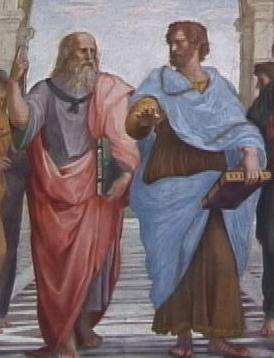
Here is the bibliography as it stands so far:
Audi, Robert. Belief, Justification, and Knowledge. Belmont, California: Wadsworth, 1988.
Brown, Colin et al. Christianity and Western Thought: A History of Philosophers, Ideas & Movements. Downers Grove, Ill: InterVarsity Press, 1990.
Bush, L. Russ. A Handbook for Christian Philosophy. Grand Rapids, Mich: Zondervan, 1991.
Chisholm, Roderick M. Theory of Knowledge. 2nd ed. Englewood Clffs, NJ: Prentice Hall, 1977.
__________. On Metaphysics. Minneapolis: University of Minnesota Press, 1989.
Clark, Kelly James, ed. Philosophers Who Believe. Downers Grove, Ill: InterVarsity Press, 1993.
DeWeese, Garrett J, and J. P. Moreland. Philosophy Made Slightly Less Difficult: A Beginner's Guide to Life's Big Questions. Downers Grove, Ill: InterVarsity Press, 2005.
Geivett, R. Douglas, and Brendan Sweetman, eds. Contemporary Perspectives on Religious Epistemology. New York: Oxford Press, 1992.
Moreland, J. P. Love Your God with All Your Mind: The Role of Reason in the Life of the Soul. Colorado Springs: NavPress, 1997.
Nash, Ronald H. Faith and Reason: Searching for a Rational Faith. Grand Rapids, Mich: Zondervan Academie Books, 1988.
Plantinga, Alvin. The Nature of Necessity. Oxford: Clarendon Press, 1974.
Sire, James W. The Universe Next Door: A Basic Worldview Catalog. Downers Grove, Ill: InterVarsity Press, 2004.
Sproul, R. C. The Consequences of Ideas: Understanding the Concepts that Shaped Our World. Wheaton, Ill: Crossway Books, 2000.
Swinburne, Richard. The Existence of God. Oxford: Clarendon Press, 1979.
__________. The Evolution of the Soul. Oxford: Clarendon Press, 1986.
Sadly, the Monster Wasn't Real

A project that Kathy is doing with some of her students at school brought back memories of one of those "loss of innocence" events in my life. I was in the second or third grade, and I guess I should have known better, but I had seen that comic book ad a hundred times that offered a life-size Frankenstein monster. "Seven feet tall", it said! I had read and reread the description in the ad:
Just imagine your friends shock when they walk into your room and see the "Monster" reaching out--bigger than life--Frankenstein, the original man-made monster, that creation of evil genius that terrorized the world. A giant 7 feet tall, his eyes glow eerily as his hand reaches out--as aweful [sic] and sinister as the wildest nightmare. Yes--Frankenstein is 7 feet tall, in authentic colors on durable polyethylene, and so lifelike you'll probably find yourself talking to him. Won't you be surprised if he answers? Comes complete with eyes that glow even in the pitch dark for a special chilling thrill."
I sat there reading that ad over and over, like Calvin in a Bill Waterson comic strip, fantasizing about the havoc I would wreak with a 7-foot monster under my control. It was only $1 (plus 35¢ shipping). How could they possibly sell a monster so cheap? Maybe they couldn't control him and they needed to offload him on anyone willing to take him. I pondered this for weeks, months. Finally, I decided to do it. I got $4 a month for allowance (even in the seventies this really wasn't enough, Mom, but I'm not resentful...). So with some help obtaining a money order, I sent off for my very own monster.
After a few days, I was camped out near the mailbox at the time when the mailman was supposed to arrive each day. I wondered if the monster--who was seven feet tall according to the ad--would come in an unimaginably huge box. Or would a special armored truck arrive with armed guards who would unload a large cage draped in black cloth concealing my own pet monster?
Days turned into weeks, and eventually I stopped waiting for the mailman quite so often. About the point I almost forgot about my order, Mom announced, "Oh you got a package."
"WHERE? WHERE IS IT?" I raced to the kitchen where she indicated all the mail was, looking for a large box or a cage draped in black. Instead, I saw a rather ordinary looking 8 1/2 x 11 envelope. I opened it to reveal a folded plastic--plastic as in something almost like plastic wrap--POSTER. A poster? The ad said he was "reaching out." Well, he was...but in a two-dimensional sense. The glowing eyes? Glow-in-the-dark dot-like stickers that I had to stick on the monster myself. Authentic colors? Well, the ad in the comic book had better colors. Mine was a green tinted, black and white, Lon Cheney-ish Frankenstein monster on plastic. And as long as it hung on the back of my bedroom door (the only place my mother would let me hang it) it never lost the wrinkles from being shipped in the envelope. This monster would not terrorize the world. And he certainly wouldn't talk back to me.
The monster hung on my door for a few months. I don't really remembered what happened to it in the end. I don't remember getting rid of it. But I do remember looking upon it with scorn, knowing I'd been suckered. I'd lay awake at night in the dark, seeing only those two stupid glow-in-the-dark eyes looking at me. Laughing at me. Did he speak? Well, maybe only to say, "Hey? What'd you expect for a buck, kid?"
I know what you're thinking. You're asking, "Well what kind of stupid child were you?" Yeah, I know. But look at that ad. They're advertising in comic books, read by kids with already over-active imaginations. I was a child! I believed in flying reindeer and that unknown phenomena could be explained by "magic." I read books where animals wore clothing and talked to one another. So did you. That ad was designed to be misleading to a child with any kind of imagination. Yes, I know the ad states explicitly that the monster is ON "durable polyethylene. But I didn't know what polyethylene was. I don't think I'd know what it was now had I not bought a Frankenstein monster on the stuff when I was seven-years-old.
You'd think that I would have lost all innocence with that experience--that I would have learned more about the ways of the world and faced the rest of my life with the outlook of a hardened cynic. But no. Children are resilient. Before I would lose my naivete, I would first have to order that 100 piece toy soldier set that came in its very own FOOT LOCKER! For only $1.25!!










